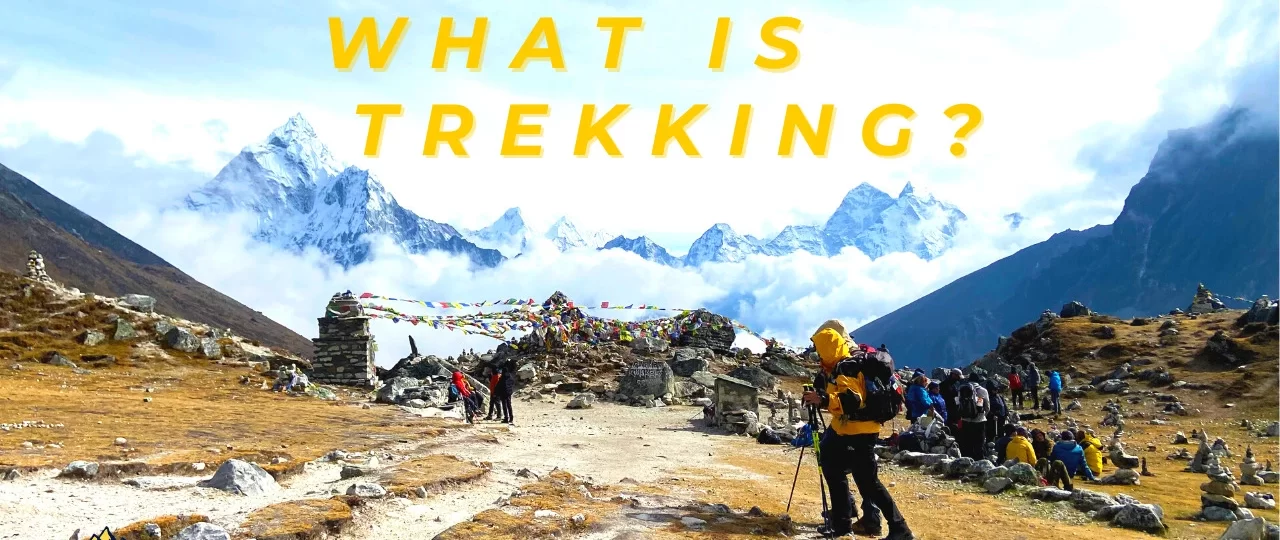What is trekking? Everything You Need To Know!
Trekking, at its core, is a form of long, challenging journey undertaken on foot, typically in natural settings such as mountains, forests, or wilderness areas. Unlike hiking, trekking often implies a more extended and strenuous expedition, involving multiple days and diverse terrains. It’s an immersive experience that demands a fusion of physical endurance and a spirit of adventure. Examples of trekking are Everest Base Camp Trek a long day trek, whereas Annapurna Base Camp Trek is a shorter version of the trek.
The primary goal of trekking extends beyond reaching a destination; it encompasses exploring the majestic Himalayan ranges, encountering local villages, and experiencing the richness of natural resources. Typically, trekkers cover an average distance of 4-5 hours per day, with varying durations for different treks.
There are two main types of trekking: tea house trekking, which involves staying in local guesthouses, and camping trekking, which offers a more adventurous experience of sleeping under the stars.
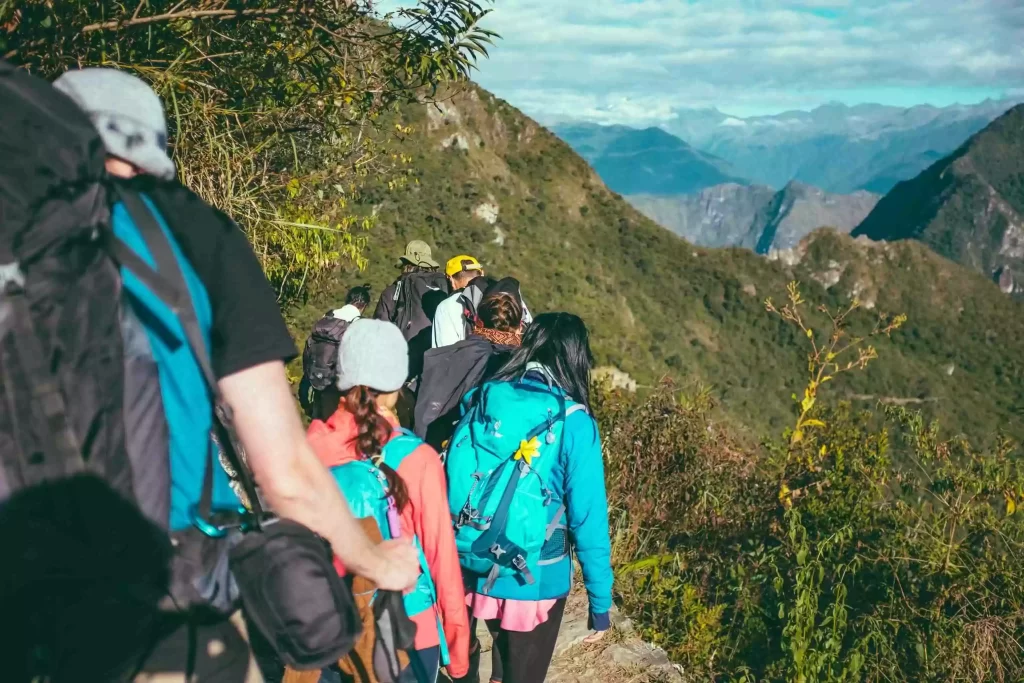
Historical Significance
Trekking has ancient roots, stretching back through history to when communities and individuals undertook challenging journeys for survival, trade, or cultural exchange. Explorers and traders traversed challenging landscapes, leaving behind trails that became the foundation for modern-day trekking routes. Over time, trekking evolved from a necessity into a recreational pursuit, attracting enthusiasts eager to test their mettle against the backdrop of nature.
Modern Trends in Trekking
In the contemporary era, trekking has evolved into a global phenomenon, with enthusiasts from various corners of the world seeking out new challenges and breathtaking vistas. Technological advancements have facilitated the accessibility of remote trekking destinations, while social media has fueled the desire to capture and share these awe-inspiring experiences. Sustainable and eco-friendly trekking practices have gained prominence, aligning with the growing global consciousness regarding environmental conservation.
What are the benefits of Trekking?
Trekking transcends the boundaries of a mere physical activity; it’s a holistic experience that contributes to overall well-being. Let’s unravel the myriad benefits that trekking offers, encompassing physical health, mental well-being, and the fostering of social connections.
A. Physical Health
Cardiovascular Fitness: Trekking involves sustained physical exertion, promoting cardiovascular health by enhancing heart and lung function.
Muscle Strength and Endurance: The varied terrains encountered during treks engage different muscle groups, leading to improved strength and endurance.
Weight Management: The calorie-burning nature of trekking aids in weight management, offering a refreshing alternative to traditional workouts.
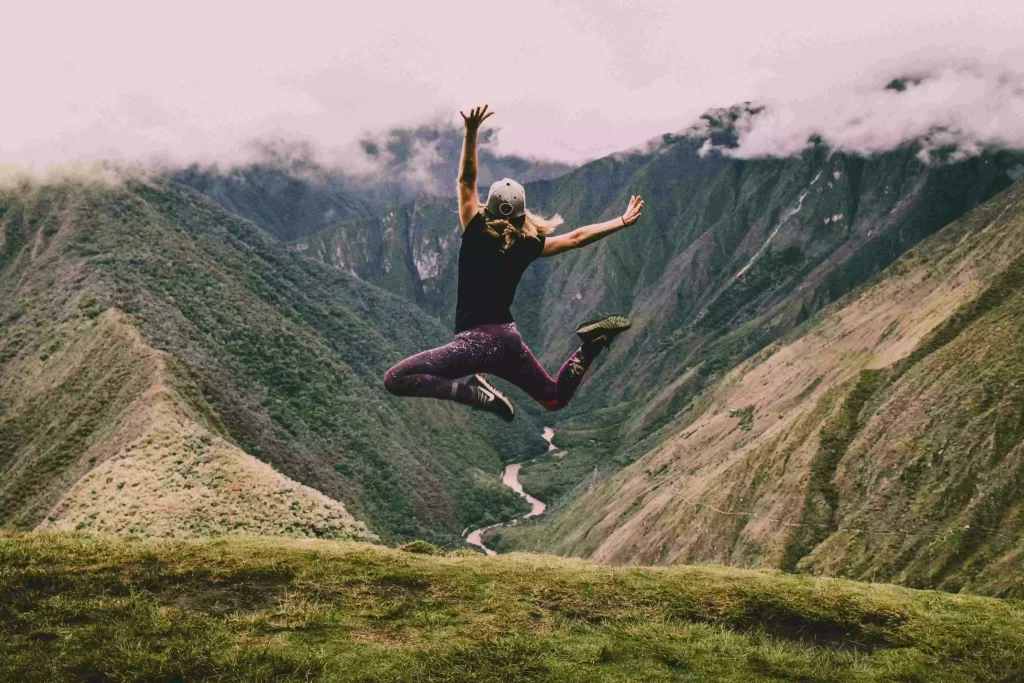
B. Mental Well-being
Stress Reduction: Immersing oneself in nature during treks has proven to reduce stress levels, providing a mental escape from the demands of daily life.
Enhanced Mood: The release of endorphins, often referred to as “feel-good” hormones, during trekking contributes to an elevated mood and a sense of well-being.
Mindfulness and Relaxation: The meditative aspects of trekking, combined with the tranquil surroundings, create opportunities for mindfulness and relaxation.
C. Social Connection
Shared Experiences: Trekking often involves group activities, fostering shared experiences that strengthen bonds among participants.
Team Building: Overcoming challenges together on a trek builds a sense of camaraderie and teamwork.
Community Engagement: Engaging with local communities during treks provides an avenue for cultural exchange and mutual understanding.
How to prepare for a Trekking?
Embarking on a trek is an exhilarating adventure, but proper preparation is paramount for a safe and enjoyable experience. Here, we outline essential steps for preparing yourself physically and mentally, along with crucial health considerations.
A. Physical Fitness
Cardiovascular Conditioning: Engage in aerobic exercises like jogging, cycling, or swimming to enhance cardiovascular fitness, crucial for the sustained physical exertion of trekking.
Strength Training: Incorporate strength exercises, focusing on core and lower body muscles, to build the strength required for navigating varied terrains.
Endurance Building: Gradually increase the duration and intensity of your workouts to build the endurance necessary for multi-day treks.
B. Mental Preparation
Mindfulness Practices: Develop mindfulness through practices like meditation to enhance mental resilience and focus during challenging trekking situations.
Stress Management: Cultivate stress management techniques to cope with unexpected challenges and uncertainties that may arise during the trek.
Positive Mindset: Foster a positive mindset by visualizing successful trekking experiences, boosting confidence and mental preparedness.
C. Vaccinations and Health Check
Consult with a Healthcare Professional: Schedule a visit with a healthcare professional to assess your overall health and discuss the specific health risks associated with your chosen trekking destination.
Vaccinations: Ensure your routine vaccinations are up-to-date, and inquire about any additional vaccines required for the region you plan to trek in.
Medication and First Aid Kit: Pack a personal first aid kit with essential medications, blister treatments, and any prescription medications you may require during the trek.
What are the types of Trekking?
Trekking is a versatile outdoor activity, offering a range of experiences to cater to diverse preferences. Explore the various types of trekking, each presenting a unique adventure and connection with nature.
A. Day Treks
Nature Escapes: Day treks are perfect for those seeking a brief escape into nature without the commitment of an overnight stay. They often involve exploring scenic trails, visiting viewpoints, and enjoying the outdoors for a few hours.
Fitness and Recreation: Ideal for individuals with limited time, day treks provide an opportunity for fitness enthusiasts to engage in a challenging yet manageable trek, often completed within a single day.
B. Multi-Day Treks
Backpacking Adventures: Multi-day treks offer a deeper immersion into nature, requiring backpacking and camping along the trail. These treks often lead to remote destinations, providing a more profound connection with the wilderness.
Extended Exploration: Trekking over multiple days allows adventurers to explore vast landscapes, traverse challenging terrains, and experience the gradual changes in the environment and ecosystems.
C. Themed Treks (Wildlife, Cultural)
Wildlife Treks: Themed treks focused on wildlife provide opportunities to explore natural habitats and observe indigenous flora and fauna. These treks often involve guided tours with a focus on conservation and education.
Cultural Immersion: Cultural treks immerse participants in the traditions, rituals, and lifestyles of local communities. These journeys often include visits to historical sites, interactions with local residents, and a deeper understanding of indigenous cultures.
Essential Trekking Gear
Embarking on a trek requires more than just enthusiasm; it demands proper gear to ensure a safe and enjoyable journey. Let’s delve into the essential trekking gear, categorizing it into footwear, backpacks and accessories, clothing layers, and navigation tools.
A. Footwear
Hiking Boots: Sturdy, ankle-supporting boots provide stability on uneven terrain and protect your feet from rocks and debris.
Moisture-Wicking Socks: Socks made from synthetic or merino wool materials help keep your feet dry by wicking away moisture, reducing the risk of blisters.
B. Backpacks and Accessories
Trekking Backpack: A well-fitted backpack with adjustable straps and compartments for organized storage is crucial for carrying essentials.
Hydration System: Ensure an adequate water supply with a hydration pack or water bottles to stay hydrated throughout the trek.
Trekking Poles: Poles provide stability, reduce strain on joints, and assist in navigating challenging terrains.
C. Clothing Layers
Moisture-Wicking Base Layer: A base layer that wicks away sweat keeps your skin dry and regulates body temperature.
Insulating Layer: Insulating layers, such as fleece or down jackets, provide warmth in colder conditions.
Waterproof Outer Layer: A durable, waterproof, and windproof jacket protects against unpredictable weather.
D. Navigation Tools
Map and Compass: Even in the age of GPS, a map and compass are essential for navigation, especially in remote areas with limited connectivity.
GPS Device: A portable GPS device can be a valuable backup for navigation and tracking your route.
Headlamp/Flashlight: A reliable light source is crucial for navigating trails in low-light conditions or during nighttime camping.
Choosing the Right Trek
Selecting the ideal trek is a pivotal step in ensuring a rewarding and enjoyable adventure. Here, we explore key factors to consider when choosing the right trek, including difficulty levels, duration and distance, and climate considerations.
A. Difficulty Levels
Easy Treks: Suitable for beginners, these treks involve well-defined trails and minimal elevation gain. They offer a gentle introduction to the world of trekking.
Moderate Treks: Moderate-difficulty treks challenge participants with varied terrain and moderate elevation gain. They are suitable for those with some trekking experience.
Difficult/Challenging Treks: These treks are for seasoned adventurers, featuring rugged terrain, steep ascents, and potentially challenging weather conditions. Advanced fitness and trekking skills are recommended.
B. Duration and Distance
Short Day Treks: Ideal for those with time constraints, these treks usually last a few hours and cover a shorter distance.
Weekend Treks: Perfect for a quick getaway, weekend treks typically span one to three days, offering a more immersive experience without a significant time commitment.
Extended Treks: For those seeking a profound adventure, extended treks can last a week or more, covering considerable distances and often requiring camping along the route.
C. Climate Considerations
Seasonal Variations: Research the best time to undertake your chosen trek, considering weather conditions, temperature, and precipitation. Some treks are more enjoyable during specific seasons.
Altitude: Treks in high-altitude regions may present challenges like altitude sickness. Acclimatization and proper preparation are crucial for such treks.
Weather Forecast: Check the weather forecast for the trekking destination before embarking to ensure you pack appropriate clothing and gear for the conditions.
Famous Trekking Destinations
Nepal, nestled in the heart of the Himalayas, boasts iconic trekking destinations that draw adventurers from across the globe. The Everest Base Camp trek, a pinnacle of high-altitude exploration, offers breathtaking views of Mount Everest, the Khumbu Glacier, and a rich immersion into Sherpa culture.
Annapurna Circuit, renowned for its diverse landscapes and challenging Thorong La Pass, captivates trekkers seeking a holistic Himalayan experience. Annapurna Base Camp, set amidst lush rhododendron forests, provides awe-inspiring vistas of the Annapurna Range.
Venturing into the lesser explored, the Manaslu Circuit presents an off-the-beaten-path trek through traditional Tibetan villages and the challenging Larke Pass, promising a unique cultural and adventure blend.
Across the globe, the Andes Mountains unfurl their wonders. The Inca Trail in Peru is a historical pilgrimage, leading adventurers through ancient Inca ruins, including the mystical Machu Picchu, and weaving a narrative through the Sacred Valley. Meanwhile, Torres del Paine in Chile invites trekkers to navigate glaciers, turquoise lakes, and the iconic granite spires of the Paine Massif in Torres del Paine National Park.
Whether it’s the allure of the world’s highest peaks in Nepal or the historical wonders of the Andes, these famous trekking destinations offer a tapestry of culture, nature, and adventure, promising an unforgettable journey for those who dare to tread their paths.
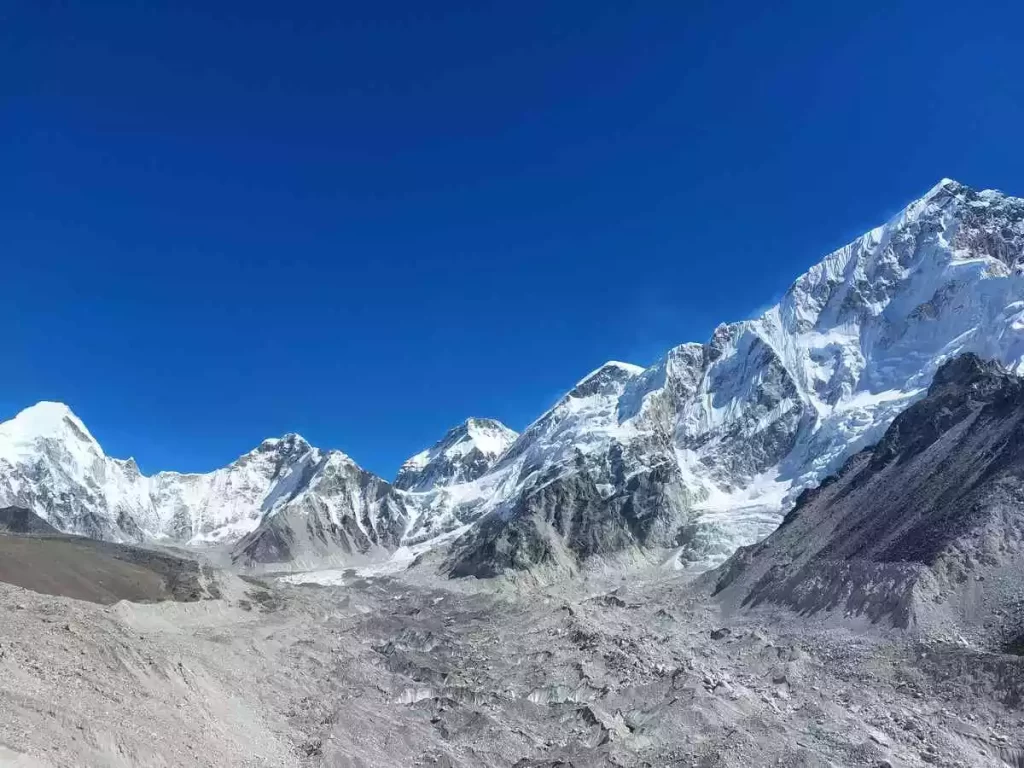
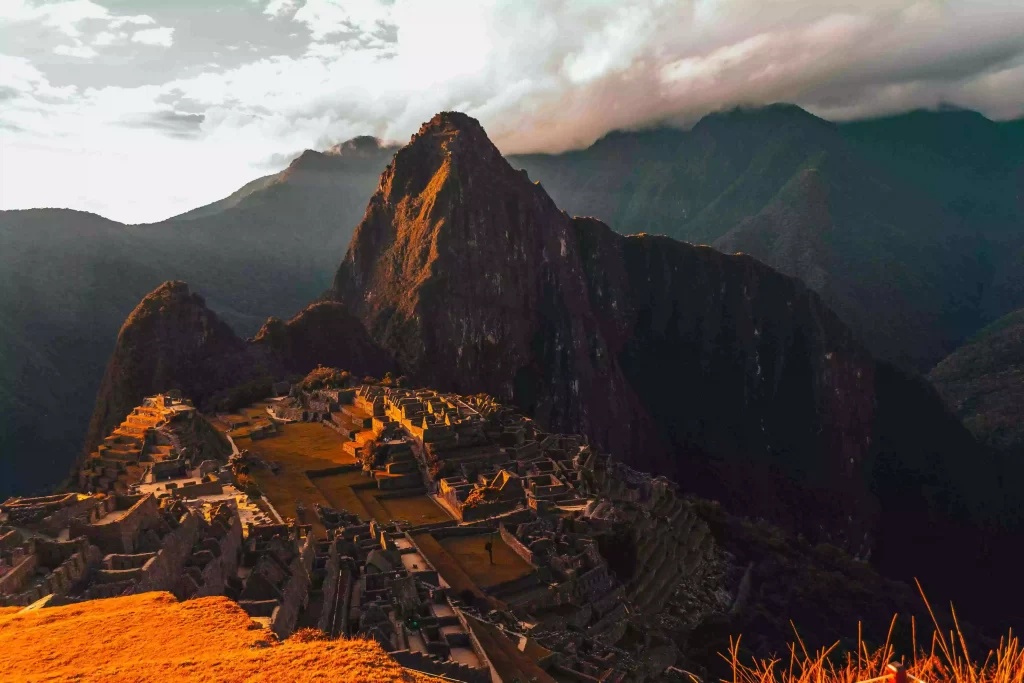
Trekking Etiquette
Trekking etiquette goes beyond conquering trails; it’s about fostering a harmonious coexistence with nature, local cultures, and fellow trekkers.
Embracing the Leave No Trace principles is fundamental, urging trekkers to carry out all waste, stay on designated trails, and minimize campfire impact to preserve the pristine environments they explore. Equally crucial is the respect for local cultures, requiring trekkers to delve into the customs of the communities they encounter, dress modestly, and engage with locals respectfully.
In the dynamics of a trekking group, effective communication is paramount—discussing expectations, preferences, and concerns ensures a cohesive and enjoyable journey. Respecting individual paces, leaving no one behind, and fostering camaraderie contribute to a positive group experience.
Trekking etiquette, woven with environmental responsibility, cultural sensitivity, and group cohesion, enhances the overall trekking adventure and leaves a positive legacy for future trailblazers.
Safety Measures while Trekking
Trekking, while a thrilling adventure, demands a commitment to safety through proactive measures. Emergency preparedness begins with a well-equipped first aid kit containing essential items, from bandages to personal medications. Acquiring basic first aid training ensures the ability to address minor injuries and recognize signs of altitude sickness while maintaining communication tools like a mobile phone or satellite device ensures swift assistance if needed.
Navigation skills are paramount for a secure trekking experience. Carrying a map and compass, and being proficient in their use, is indispensable for effective trail navigation, especially in areas lacking GPS connectivity. Utilizing a GPS device as a backup further enhances navigation precision, ensuring that trekkers remain on the right path and can communicate their location if necessary. Thorough route planning, including informing a trusted contact about your itinerary, adds an extra layer of safety.
Weather awareness is key to adapting to changing conditions. Regularly checking weather forecasts for the trekking destination allows for appropriate clothing choices, including waterproof and windproof gear, preparing trekkers for unexpected weather variations. Additionally, being mindful of altitude considerations, acclimatizing gradually, and recognizing symptoms of altitude sickness contribute to a safer and more enjoyable trekking experience.
FAQs Regarding Trekking
Q: How do I choose the right trek for my skill level?
A: Consider factors such as difficulty level, duration, and climate. Start with easier treks if you’re a beginner and gradually progress to more challenging ones as your skills and fitness improve.
Q: What essential gear should I pack for a trek?
A: Key items include sturdy hiking boots, weather-appropriate clothing layers, a backpack, a first aid kit, navigation tools (map, compass, or GPS), and sufficient water and food supplies.
Q: How can I acclimatize to high altitudes during a trek?
A: Gradual acclimatization is crucial. Increase your altitude slowly, stay hydrated, and be attentive to signs of altitude sickness, such as headaches and nausea. Descend if symptoms persist.
Q: Are trekking poles necessary, and how do I use them effectively?
A: Trekking poles provide stability and reduce strain on joints. Use them on uneven terrain, adjusting the length to suit your height. They help maintain balance and lessen the impact on your knees.
Q: What safety measures should I take during a trek?
A: Prioritize emergency first aid training, carry a well-stocked first aid kit, hone navigation skills, stay weather-aware, and inform someone trustworthy about your trekking itinerary.
Q: How can I minimize my environmental impact while trekking?
A: Follow Leave No Trace principles, carry reusable items, choose eco-friendly camping practices, support local conservation initiatives, and engage in responsible tourism by respecting local regulations and cultures.
Q: Can I trek solo, or is it better to join a guided group?
A: Both options are viable, but it depends on your experience and comfort level. Solo trekking requires advanced skills, while guided groups provide support, safety, and local insights for those seeking a structured experience.
Conclusion
As we conclude this journey through the world of trekking, the call to action is clear—embark on your own trekking adventure. Whether it’s the majestic Himalayas, the captivating Andes, or any other corner of the globe, the trails await your footsteps. Embrace the physical and mental challenges, savor the breathtaking landscapes, and revel in the transformative power of the trekking experience.
In the spirit of adventure, let the trails guide you towards self-discovery, a deeper connection with nature, and the realization that, with each step, you are not just exploring the world; you are shaping your own extraordinary journey. So, lace up your boots, pack your essentials, and venture forth into the wonders that trekking unfolds. The trails are calling, and your adventure awaits.
